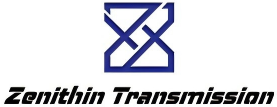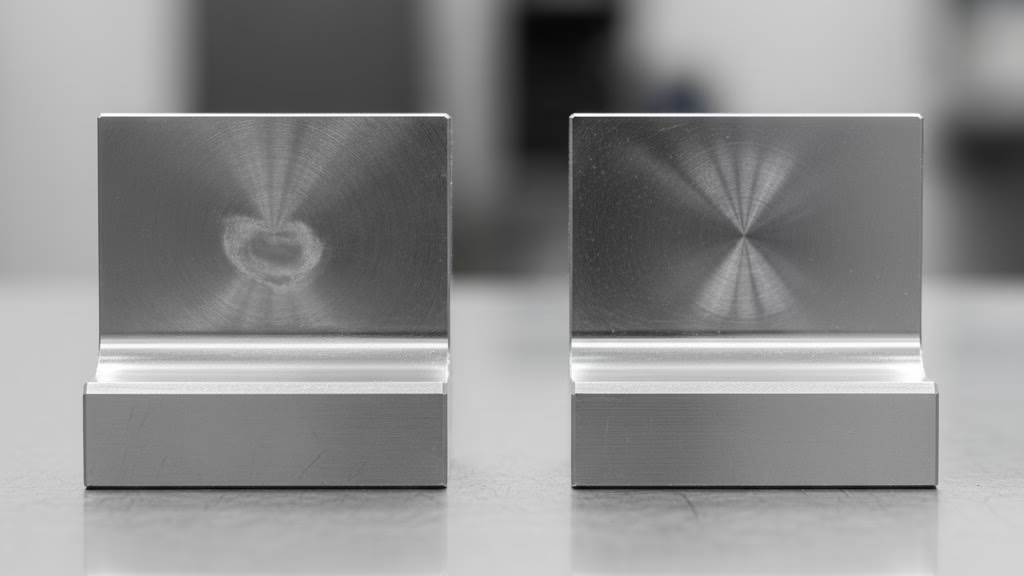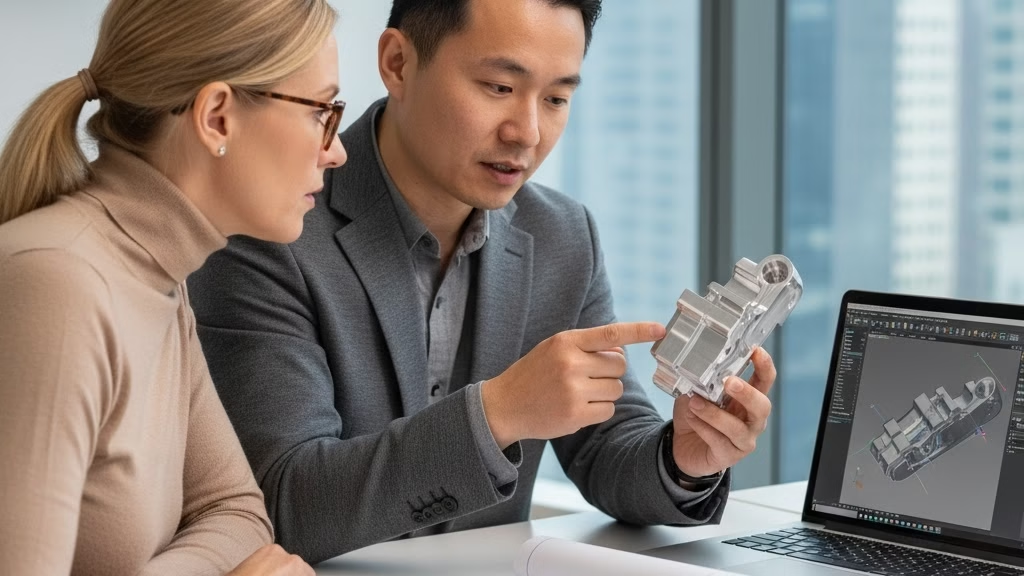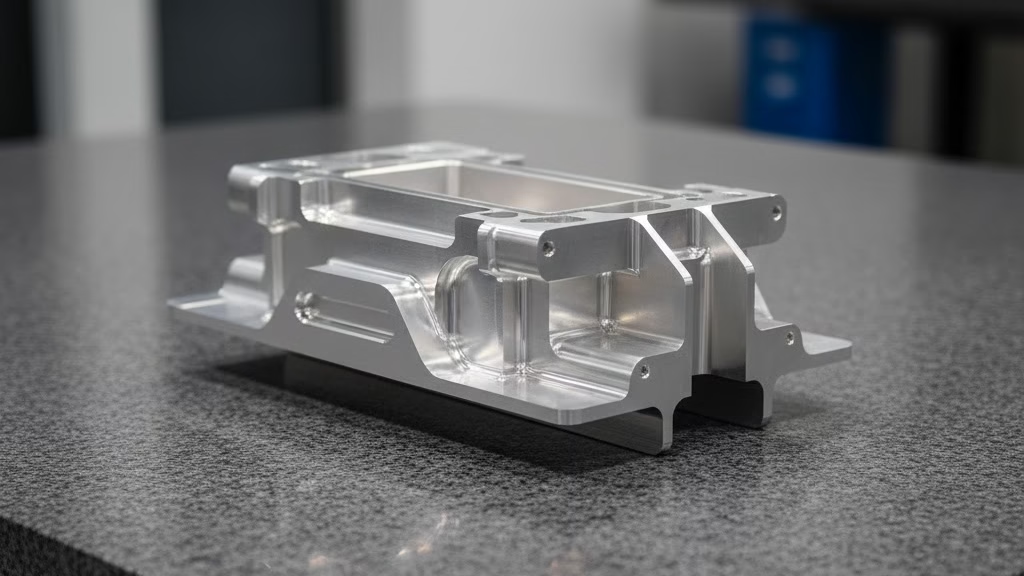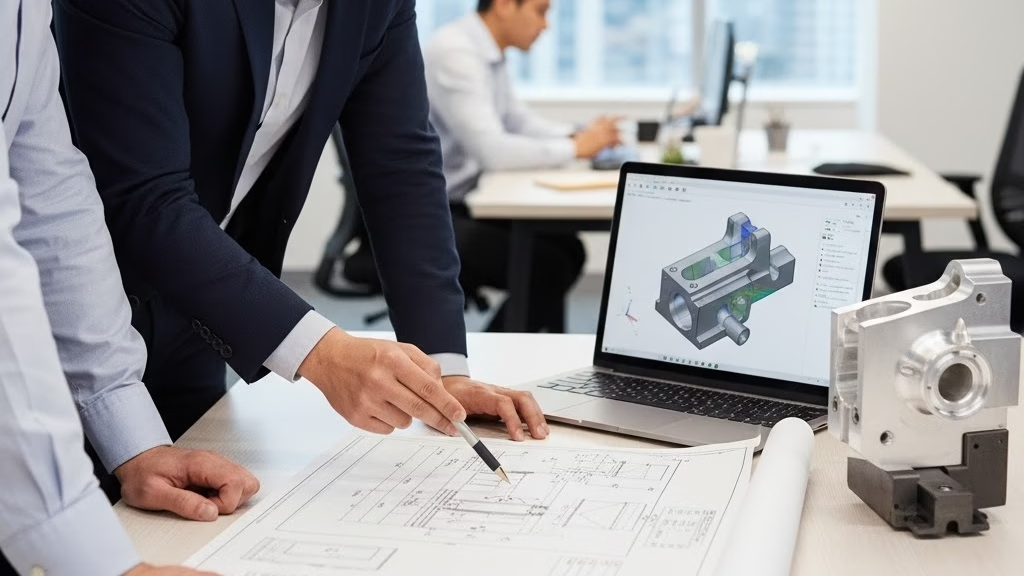Received a shockingly high CNC machining quote? The problem often isn’t your design; it’s the hidden cost of material machinability. We’ll show you how to analyze the total manufacturing cost, optimize your material selection, and significantly lower your part price before you even request a quote.
The final CNC machining cost is primarily determined by material machinability (MR), not raw material price. Poor machinability (a low MR) drastically increases machining time, tooling cost, and labor. For example, 304 stainless steel (MR 40%) can cost 40-50% more to machine than 303 stainless (MR 75%), even if its purchase price is slightly lower.
Now, you’ll learn how to apply this knowledge. We’ll share specific DFM (Design for Manufacturability) techniques, real-world case studies, and supplier insights that will immediately help you cut your CNC machining costs.
What 90% of Your Quote is Hiding
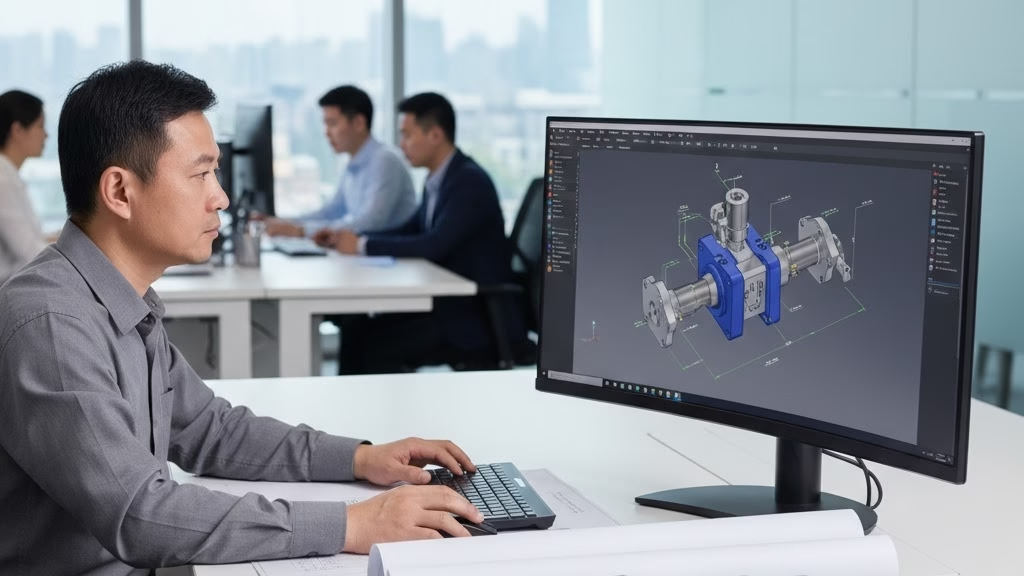
As an engineer, you’re trained to analyze data. So let’s look at the data of a typical quote. We call it the “Cost Iceberg” because the part you see—the raw material cost—is almost always the smallest, least significant piece.
The real financial impact, the 80-90% of the cost hidden below the surface, is driven by machinability. This “hidden” cost is made of three parts:
- Machining Time Cost: This is the most significant factor. Every CNC shop has a
Machine Hour Rate(in the US, often $75 – $150/hour) that accounts for the machine’s cost, power, operators, and overhead. This clock is always running. If you choose a material that forces the machine to run twice as slow, you have just doubled this entire, massive cost component. - Tooling Cost: This isn’t just about gradual tool wear. Hard-to-machine materials cause “catastrophic tool failure.” This means a $150 end mill can shatter in seconds. This not only costs a new tool but also stops production for replacement and re-calibration, all while that $150/hour clock keeps ticking.
- Setup & Labor Cost: Beyond the initial programming, some materials require constant “manual intervention.” A “gummy” material like 304 stainless, for example, produces long, stringy chips that can wrap around the tool, forcing an operator to physically stop the machine and clear them. This is pure labor cost added directly to your part.
What is Machinability Rating (MR)?
So, how do we quantify “hard to machine”? We use a simple, powerful number: the Machinability Rating (MR).
The industry baseline is set at 100% for a specific, easy-to-cut steel (AISI 1212). Every other material is rated against it.
- A higher MR = easier to machine, faster speeds, lower cost.
- A lower MR = harder to machine, slower speeds, higher cost.
This isn’t a small difference. The gap between materials is vast and directly translates to your final part cost. Look at this comparison—it might just change the way you select materials forever.
| Material Example | Machinability Rating (MR) | What This Means for Your Cost |
|---|---|---|
| 6061-T6 Aluminum | 150% – 200% | The “default” choice. Very fast, easy on tools, and highly cost-effective. |
| 303 Stainless Steel | 70% – 80% | The “smart” stainless choice. Designed with sulfur for good machinability. |
| 304 Stainless Steel | 40% – 45% | The First Cost Trap. Nearly twice as slow and difficult to machine as 303. |
| 7075-T6 Aluminum | 100% – 120% | A strong alloy, but its machinability is significantly worse than 6061. |
| Ti-6Al-4V (Titanium) | 20% – 25% | The Tooling Trap. Extremely slow speeds are required to manage heat, which destroys tools. |
| Inconel 718 | 8% – 15% | The Cost Black Hole. Requires specialized machines and extremely slow, high-torque operations. |
As you can see, the “cheaper” 304 stainless steel is fundamentally almost 50% harder and slower to machine than 303 stainless. That 5-10% you saved on the raw material is about to be completely erased by a 40-50% increase in machining time.
Your Key Cost-Reduction Decisions
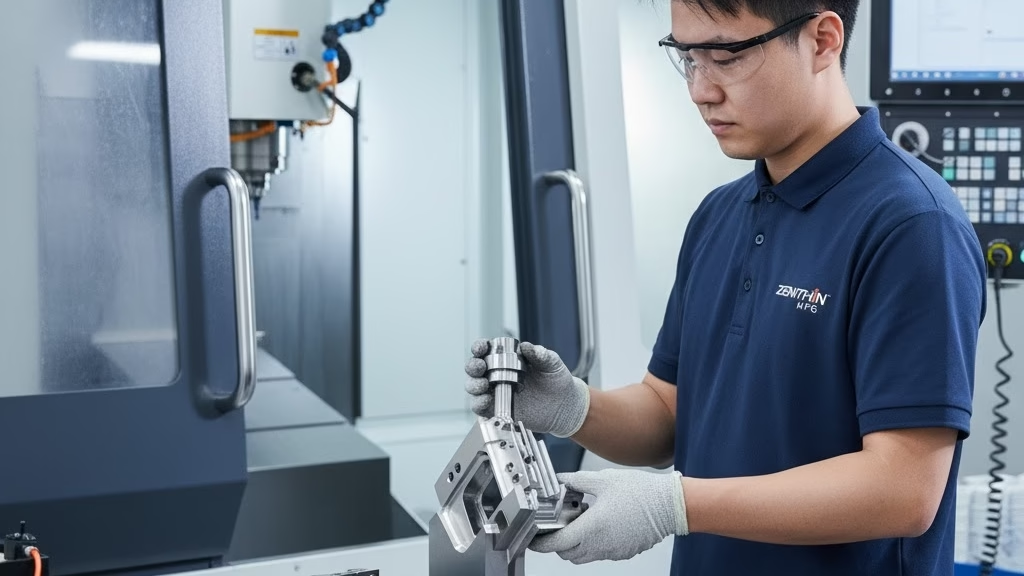
Knowing the MR number is one thing. Seeing it in action is everything. As engineers, you’re constantly making trade-offs between performance and cost. Here are the three most common “decision points” we see every day—and how they impact your final CNC machining cost.
Why You Should (Almost) Always Choose 303 over 304 Stainless Steel
We recently had a new engineer send in a design for a fluid control valve body made from 304 stainless steel. We quoted it at $120 per part.
He was furious, pointing out that 304 raw material is only 5-10% cheaper than 303. How could our price be 40% higher?
We had to explain the “hidden” factory floor reality. We asked him one question: “Do you need this part to resist a specific, harsh acid, or does it just need to not rust?”
He admitted it was just for general corrosion resistance in a food-grade environment.
Here was the problem:
- 304 (MR 40%) is notoriously “gummy” and suffers from extreme
- work hardening. The material surface hardens instantly as it’s being cut, which destroys tool life. Its stringy chips also force us to stop the machine manually to clear them, adding pure labor cost.
- 303 (MR 75%) has sulfur added specifically to solve this. It’s designed to be “free-machining.” The chips break off cleanly, we can run the machine 60%+ faster, and tool life is dramatically longer.
We re-quoted the part in 303. The new price? $78.
The takeaway for you: Unless you have a specific chemical resistance requirement that only 304 can meet, choosing 303 is the single easiest and most significant cost-saving decision you can make on a stainless steel part. That 5% you “save” on raw 304 material will cost you 40% more on the final part.
The Hidden Cost of 7075 vs. 6061 Aluminum
Here’s another common trap. You need a high-strength aluminum part, so you default to 7075-T6. It’s strong, almost like steel.
But look at the data again. 7075 (MR 100-120%) is significantly harder to machine than the “default” 6061 (MR 150-200%). This forces slower cycle times and causes more tool wear.
This is where you must ask the critical engineering question: “Do I really need the full tensile strength of 7075?”
If your analysis shows that 6061 meets 90% of the functional requirements, you could save over 30% in machining costs per part. Sometimes, a slightly thicker wall or an extra rib made from 6061 is vastly cheaper than a thinner part made from 7075.
Titanium & Inconel
Finally, we have the exotic alloys. When you specify a material like Ti-6Al-4V (Titanium, MR 20%) or Inconel (MR 8-15%), the cost discussion changes completely.
The cost drivers here aren’t just “hardness”; they’re about physics.
- Titanium’s Trap (Low Thermal Conductivity): When cutting aluminum, 90% of the heat escapes with the chip. When cutting titanium, 80% of the heat flows back into the cutting tool. This doesn’t just wear the tool; it melts it. We are forced to run at “creep” speeds to manage the heat, as detailed in our guide to machining titanium.
- Inconel’s Trap (Extreme Work Hardening): Inconel hardens so fast and so severely that it requires special low-speed, high-torque machines and extremely expensive tooling. This is a primary driver of high Inconel machining costs.
The takeaway for you: The cost increase for these materials is not linear—it is exponential. When you select one of these, you must accept that the final part cost will be dictated almost entirely by machine time and tooling, not the raw material.
How We Really Quote a Hard-to-Machine Part

You’ve seen the data, but now I want to pull back the curtain and share two “insider” truths about how a supplier thinks when quoting a difficult job. This is information you won’t find on a data sheet, and it directly addresses that “sky-high quote” frustration.
Insight 1: Your “Sky-High” Quote Might Be a “No-Bid”
You get a quote for an Inconel part that is astronomical. You think the shop is greedy. The truth? That shop is probably a high-speed “aluminum shop” (let’s call them Shop A), and that quote is their polite way of saying, “Please, don’t make me do this.”
Here’s why:
- Shop A (High-Speed): Their business is built on high-volume aluminum and plastic parts. Their machines have high-speed spindles (15,000+ RPM) and are optimized for fast, light cuts.
- Shop B (High-Torque): This shop is built for stainless steel, titanium, and Inconel. Their machines have low-speed, high-torque spindles and robust, high-pressure coolant systems.
When you send an Inconel part to Shop A, you’re asking them to:
- Destroy their tooling, which is optimized for soft materials.
- Clog their schedule, as one Inconel part can take the same machine time as 100 aluminum parts.
- Use a machine that isn’t right for the job. It’s like asking a race car to tow a boat.
That “sky-high” quote isn’t a real price. It’s a “no-bid” disguised as a quote, high enough to either scare you off or (in the rare case you accept) cover the immense hassle and disruption to their entire workflow.
The Solution: When getting quotes for tough materials, don’t just ask, “Can you make this?” Ask, “Is your shop optimized for machining [Inconel / Titanium / 316 Stainless]?” Finding a “Shop B” will get you a quote that is realistic, not defensive.
Insight 2: The Heat Treat Distortion Trap (Pre-Hard vs. Annealed Steel)
This is a classic trap for engineers designing parts from alloy steels like 4140. You have two common choices:
- Scheme A (Seems Cheaper): Start with soft, “annealed” steel (easy to machine) -> Machine the part -> Send it out for heat treatment (quenching) to get the final hardness.
- Scheme B (Seems More Expensive): Start with “pre-hardened” steel (30-40 HRC) -> Machine the part (slower, harder on tools) -> Done.
Scheme A looks cheaper because the initial machining is faster. The fatal flaw? Heat Treat Distortion.
When your perfectly machined part is heated to 800°C and then quenched, it will warp, twist, and distort. Your tight tolerances are gone. Now, you have to add secondary, highly expensive operations (like precision grinding or slow hard-milling) just to get the part back into spec—if it’s even salvageable.
The Solution: In almost every case, Scheme B is the cheaper, safer, and faster total solution. Yes, the initial machining is slower and costs more on that single operation. But you are completely eliminating the massive risk and cost of distortion, scrap, and secondary operations. You are buying predictability.
Your Design is the The Ultimate Cost Control Tool
This is the most empowering part of the entire process. What if you must use Titanium or Inconel? What if the performance requirements are non-negotiable?
You, the designer, still hold the key to controlling the final CNC machining cost.
Even with a fixed, difficult material, you can make specific DFM (Design for Manufacturability) choices that can reduce the final part cost by 30-50%. You have the power to design a “hard-to-make” part or an “easy-to-make” part from the exact same material.
Here are the three most impactful changes you can make.
1. Relax Your Tolerances (Where It Doesn’t Matter)
We know that achieving a tight tolerance (e.g., +/- 0.001″) on any material requires slow, careful finishing passes. On a hard-to-machine material, this process becomes a cost multiplier.
Why? Because those light passes on a material that work-hardens (like stainless steel) can cause tool “rubbing” instead of “cutting,” which further hardens the surface and shortens tool life. The risk of tool breakage or chatter ruining that final, precise cut is incredibly high.
The Solution: Be a “tolerance miser.” Go through your drawing and ask, “Is this tolerance functionally critical?” Only hold tight tolerances on essential mating surfaces, bores, or bearing fits. For all non-critical surfaces (like the outside of a housing), relaxing the tolerance from +/- 0.001″ to a standard +/- 0.005″ or +/- 0.010″ can eliminate entire operations, reduce cycle time, and dramatically lower the risk of scrap.
Struggling with Tolerances and DfM?
Your design drives 80% of the cost. Our DfM experts can help you optimize your drawings for manufacturing, identifying costly features like unnecessary tight tolerances *before* production.
2. Standardize & Enlarge Internal Radii (The $100 Corner)
Engineers often default to very small internal corner radii (e.g., R 0.5mm or R 1mm). On a material like Inconel, that tiny corner can literally be a $100 feature.
Here’s the physics: To cut a 1mm radius, we must use an end mill smaller than 1mm. These tiny-diameter tools are incredibly fragile. They have zero rigidity and will vibrate (chatter) and snap with the slightest cutting force. To prevent this, we have to run the machine at an agonizingly slow “creep” speed.
The Solution: Designate a larger, “standard” internal radius (e.g., R 3mm, R 6mm) whenever possible. This allows us to use a much larger, more rigid, and more common cutting tool. That bigger tool can remove material faster, with less vibration, and without breaking. This single change has a massive and direct impact on cycle time.
3. Avoid Deep Pockets & Thin Walls
Deep pockets and thin walls are challenging on any material. On hard-to-machine materials, they are a recipe for failure.
- Deep Pockets: To reach the bottom, the tool must “hang” far out of the holder. This long, unsupported tool acts like a tuning fork—it will vibrate violently (chatter), leading to poor surface finish and broken tools.
- Thin Walls: Hard materials require high cutting forces. Those forces will easily warp or break a thin, unsupported wall. The heat generated during the cut (especially in titanium) also builds up and causes the thin wall to deform.
The Solution: If your design features a very deep pocket, ask yourself: “Could this be redesigned as two separate, simpler parts bolted together?” A two-part assembly is often dramatically cheaper to machine than a single, complex “monolith” part that requires us to “hog out” 90% of a solid, expensive block of titanium.
Stop Guessing. Start Optimizing.
As an engineer, you know that the most significant costs are locked in long before a part ever sees a machine. They are locked in at the design stage. Your material choice is at the very core of that decision.
As Dr. Michael Grieves, the “Father of the Digital Twin” concept, has consistently noted, “The ‘cost’ of a product is locked in very early in the design cycle. An engineer’s choice of material… has massive ripple effects on production cost, cycle time, [and] tool wear… that are incredibly expensive to change later.”
You’ve seen how a 5% “savings” on raw material can lead to a 50% increase in total cost. You’ve seen how a single design feature, like a small corner radius, can become the most expensive part of your design.
The good news is that you now have the framework to avoid these traps. You can stop guessing and start designing for cost-effectiveness from the very beginning.
Are you unsure if your current material choice is the most cost-effective? Do you suspect your design might have a hidden “machinability trap” that will inflate your quote?
Let us help you find out.
Upload your CAD file today for a completely free, no-obligation DFM & Cost Optimization Analysis Report. Our engineers will personally review your design and identify specific opportunities—from material selection to DFM tweaks—to help you significantly reduce your final CNC machining cost.
Ready to Optimize Your Part Costs?
You’ve learned the theory. Now, let our engineers provide a practical DfM analysis to find the perfect balance of material cost and machinability for your project.
References & Notes
[1] On Machinability Ratings (MR): The baseline of 100% is assigned to AISI 1212 steel. This standard is widely used in the industry to create a relative comparison for the *cutting speed* required for other materials. A material with an MR of 50% (like 304 SS) generally must be machined at half the speed of the 1212 baseline.
[2] On Tooling & Thermal Conductivity: The primary reason materials like Titanium (Ti-6Al-4V) are so destructive to cutting tools is their low thermal conductivity (approx. 6.7 W/m·K). Over 80% of the cutting heat transfers into the tool insert, rather than being evacuated with the chip (as it is in Aluminum, ~167 W/m·K), leading to rapid tool failure.
[3] Expert View on DfM & Cost: The concept that 70-80% of a product’s cost is “locked in” during the early design phase is a core tenet of modern manufacturing engineering, attributed to authorities like Dr. Michael Grieves (on Product Lifecycle Management) and industry leaders like Sandvik Coromant in their analyses of machining economics.
